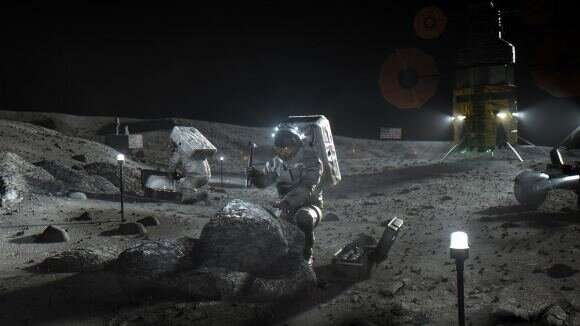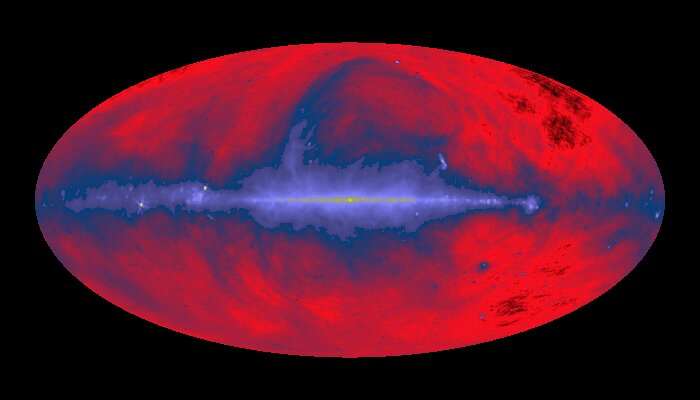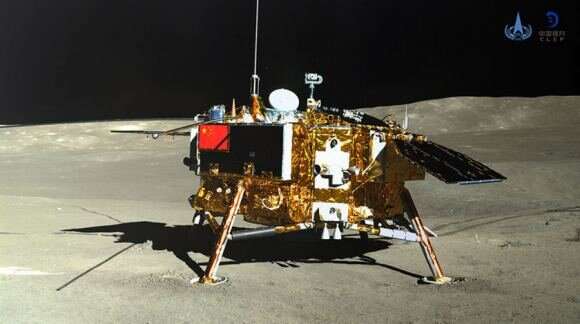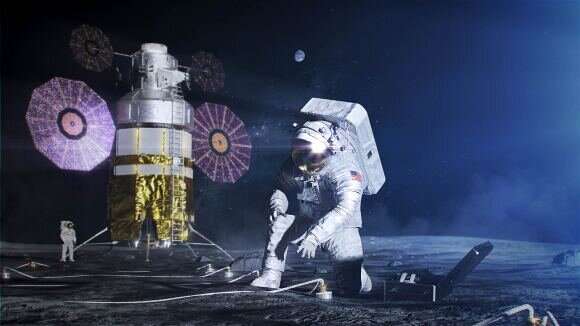The moon is the perfect spot for SETI

In less than four years, NASA plans to land the first woman and the next man on the moon as part of Project Artemis. This long-awaited return to the moon is to be followed by the construction of the Lunar Gateway, the Artemis Base Camp and a program of "sustainable lunar exploration." The creation of an enduring human presence on the moon will also create many opportunities for exciting scientific research.
For example, astronomers want to conduct radio astronomy on the far side of the moon, where telescopes could probe the earliest period of the Universe free of terrestrial radio interference. Taking this a step further, a team of astronomers recently recommended that a radio telescope on the far side of the moon (or in lunar orbit) could aid in another important area of research: the Search for Extraterrestrial Intelligence (SETI)!
The proposal was the subject of a white paper that was submitted to the National Academy of Sciences' Planetary Science and Astrobiology Decadal Survey 2023-2032. The team behind it was led by Eric J. Michaud, a mathematics undergraduate at UC Berkeley, and included members from the SETI Institute, the Institute of Space Sciences and Astronomy at the University of Malta, and Breakthrough Initiatives.
As they explained, the potential for lunar radio astronomy has been recognized since the days of the Apollo program. Interest was renewed during the early 2000s, at a time when the first steps toward returning astronauts to the moon were being made (the Constellation Program). With the evolution of NASA's plans during the past decade—"Moon to Mars" and the Artemis Program—now is the time for the necessary planning to occur.
Dr. Pete Worden, the Chairman Breakthrough Prize Foundation and the former director of NASA's Ames Research Center, was a co-author on the paper. As he told Universe Today via email, the need to establish a site for such a telescope is pressing:

"There is some urgency in establishing a lunar far-side radio-quiet reserve before we get the burgeoning problem we have in Earth orbit with optical interference from communications satellites. We are already concerned about the Chinese communications satellites—so this needs to be a global consensus now!"
The advantages of lunar astronomy have been explored at length. For starters, a radio telescope on or in orbit of the moon would allow for highly-sensitive radio astronomy experiments. On Earth, the most common radio bands used for communication are also considered lucrative for SETI research. Unfortunately, their common use makes them subject to a great deal of interference.
As such, radio telescopes on Earth are based in parts of the world that have minimal radio pollution, like deserts and remote areas. But the far side of the moon may very well be the most "radio-quiet" place in the solar system. As Michaud explained to Universe Today via email, these advantages include being able to scan "frequencies dominated by [radio frequency interference], as well as very low frequencies blocked out by the ionosphere. Going to space solves the ionosphere problem, and going to the moon mitigates the RFI problem."
As they indicate in their study, radio noise could be particularly mitigated if a crater were selected as the site of a surface observatory. Some choice locations include the Saha, Tsiolkovsky, Malapert, and Daedalus craters, all of which have been selected as possible sites by previous lunar radio-astronomy proposals. In such an environment, the crater walls would block out interference coming from orbiters or spacecraft.
Naturally, a telescope on the lunar surface presents some drawbacks, as well. For example, the observatory would require a lander mission to deliver it to the surface, which is more complex than sending missions to orbit. Here, Michaud and his colleagues use the Israeli Space Agency's Beresheet and ISRO's Vikram lunar lander (part of the Chandrayaan-2 mission) as examples, both of which crash landed on the surface.

Another drawback is that a lander would not be able to draw solar energy during the 14-day-long lunar night, which means it would have to come with a large battery pack. Communications would also be a challenge since the far side of the moon is never on a direct line of sight with Earth. China's Chang'e-4 mission deals with this by relaying its communications to the Queqiao orbiter, which orbits the moon at the Earth-moon L2 point.
On the other hand, a lunar telescope deployed in orbit of the moon would be cheaper to launch and could also support a larger antenna—since the weightlessness of orbit would do away with the need for a supporting structure. But of course, such a mission has its own share of disadvantages, such as the fact that RFI might be more of an issue on the far side.
The nature of the moon's gravitational field also means that most lunar orbits are inherently unstable, which results in orbital decay. Fortunately, Michaud and colleagues indicate that there are several "frozen orbits" where an orbiter could remain stable for years. As Michaud explains, lots of work needs to happen before a lunar SETI observatory can be realized:
"A major weakness of the paper is that it's fairly agnostic about how, specifically, a telescope in lunar orbit or on the lunar surface should look. I think the next step would be to develop some specific designs for an orbiter. Some calculations also need to be done to determine the best orbit for such an instrument."
In the meantime, Dr. Worden claims that NASA and the international astronomical community are off to a great start with Project Artemis and the Artemis Accords. Not only are these facilitating a return to the moon, but they've also established a framework for partnerships between nations and between the private and public sectors. This, Dr. Worden explains, will be essential to establishing the infrastructure and support needed:

"This important science. I'm convinced we could begin placing these observatories on the lunar far side using systems such as Blue Origin's Blue moon to place a significant far side radio telescope by the middle of this decade. The cost for such a project would be comparable to major ground-based observatories, possibly in the hundreds-of-millions-of-dollars range. This means the system could be funded, in part, by private philanthropists, much as our major new ground-based observatories are today."
Once all the necessary infrastructure is in place—the Lunar Gateway, Artemis Base Camp, etc. – astronauts will be able to conduct missions to the surface with greater frequency and for longer periods of time.
Over the long term, facilities could be built that would allow for lunar astronomy, lunar science, and lunar tourism. The lessons learned from these endeavors could even open the door (dare we hope) to a permanent lunar settlement. Since this will all be starting in just a few years, the time to plan for it is now!
More information: Michaud et al., Lunar Opportunities for SETI. arXiv:2009.12689v1 [astro-ph.IM]. arxiv.org/pdf/2009.12689.pdf
Provided by Universe Today




















